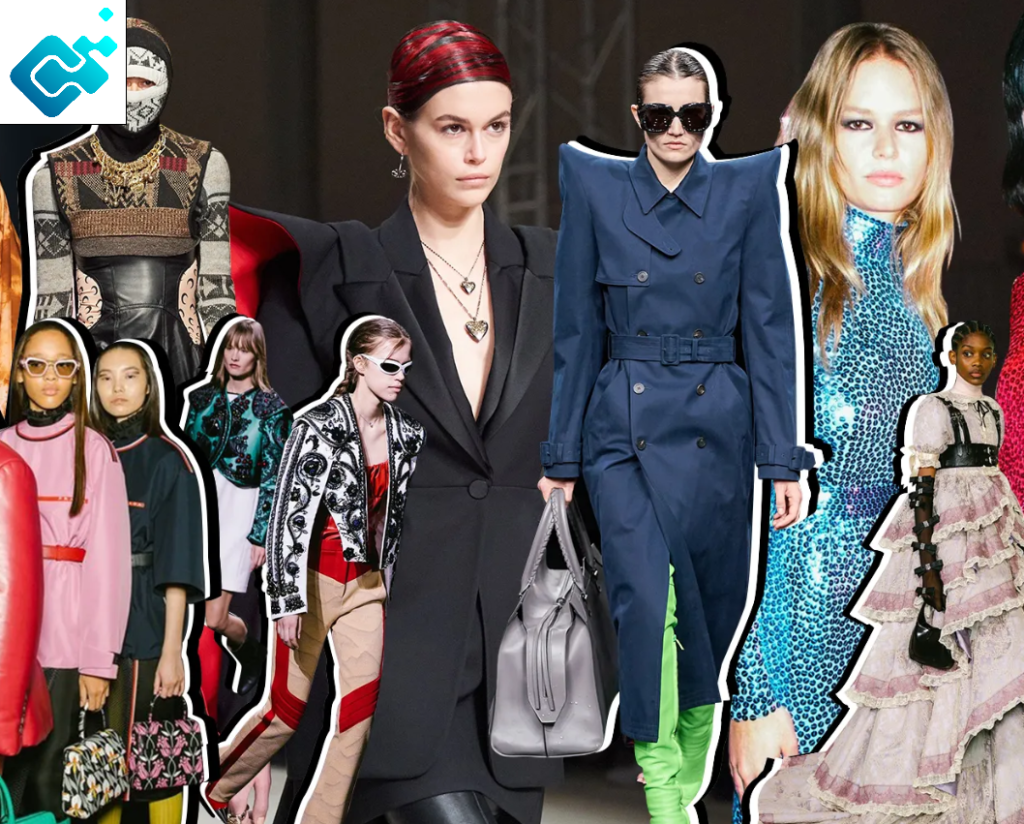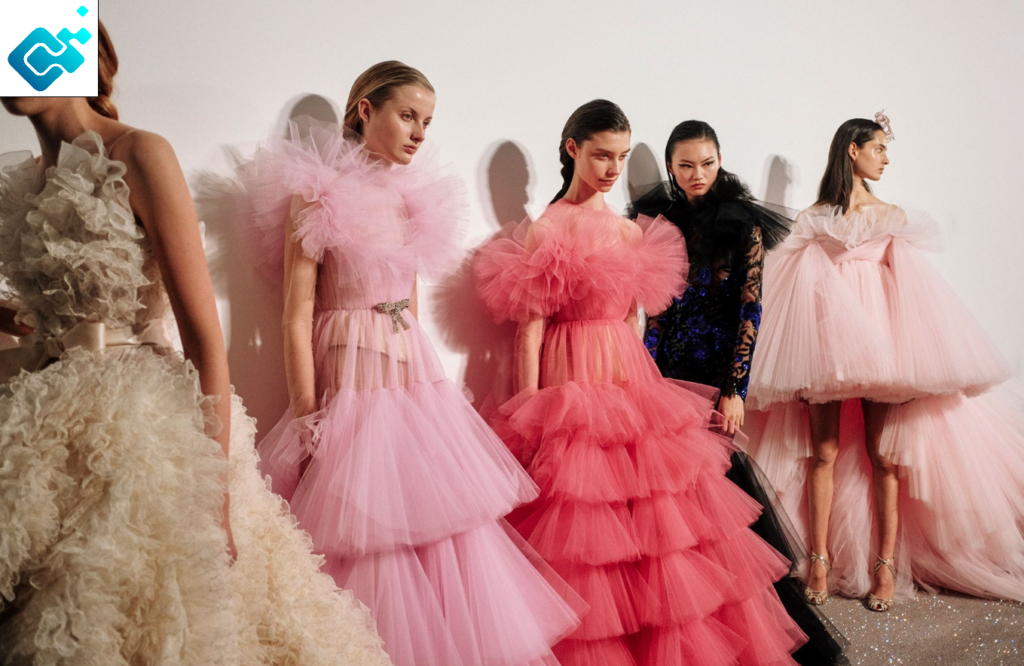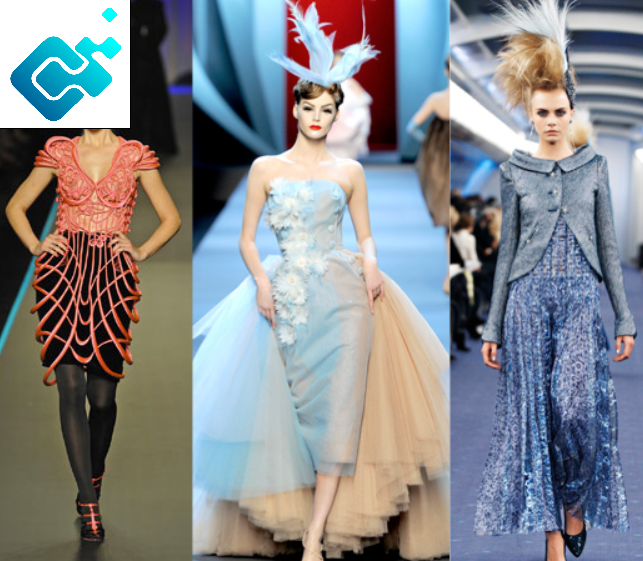A Detailed Article About High Fashion Definition: High fashion, often referred to as haute couture, represents the pinnacle of the fashion industry, characterized by the creation of exclusive, custom-fitted clothing made from high-quality, luxurious materials and crafted with extraordinary attention to detail. It is not just about the clothes but also the artistry, innovation, and craftsmanship behind each piece, often showcased on high-profile runways in fashion capitals like Paris, Milan, and New York. High fashion embodies the avant-garde, pushing the boundaries of traditional fashion norms to create something that is as much art as it is clothing.
The term “high fashion” is synonymous with exclusivity, with garments often handcrafted and tailored to fit specific clients, making them a symbol of luxury and status. This fashion category typically includes pieces from top fashion houses like Chanel, Dior, and Givenchy, where the focus is on exceptional design, materials, and construction. Luxurious fashion is not mass-produced; instead, it caters to a niche market of individuals who seek unique, high-end apparel that reflects both their personal style and the latest trends from the world’s leading designers.
High Fashion Definition: What is High Fashion?
High fashion, also known as haute couture, represents the highest level of fashion design, focusing on creating custom-fitted clothing with exceptional craftsmanship. This exclusive segment of the fashion industry involves designing garments that are not only unique but also made with the finest materials and utmost precision. High fashion pieces are typically handcrafted, often requiring hundreds of hours of labor to create a single item, and are made to fit the individual measurements of the client.
Key Characteristics of High Fashion
High fashion is distinguished by several key characteristics:
- Exclusivity: High fashion pieces are not available to the mass market. They are often made in limited quantities, sometimes as one-of-a-kind creations, making them highly sought after by those who can afford them.
- Craftsmanship: The emphasis is on superior craftsmanship, with designers paying meticulous attention to every detail. This includes hand-sewing, embroidery, and the use of luxurious fabrics like silk, velvet, and fine wool.
- Creativity and Innovation: High fashion often pushes the boundaries of design, incorporating avant-garde concepts that may not be practical but are visually striking and conceptually bold.
The Origins and Evolution of High Fashion
High fashion has its roots in the 19th century with the establishment of the first haute couture house by Charles Frederick Worth in Paris. Worth is often credited as the father of haute couture, as he was the first to create a collection and present it to clients in seasonal shows. This approach set the standard for how high fashion operates today, with seasonal collections and runway presentations being a staple of the industry.
High Fashion Through the Decades
Throughout the decades, high fashion has evolved significantly:
- Early 20th Century: Designers like Coco Chanel and Christian Dior revolutionized women’s fashion, introducing new silhouettes and materials that were both luxurious and functional.
- Post-War Era: The 1950s and 60s saw a boom in high fashion as designers like Yves Saint Laurent and Givenchy introduced modern, youthful styles that appealed to the burgeoning middle class.
- Modern Day: Today, high fashion continues to evolve, with designers exploring sustainable practices and digital technologies to stay relevant in an ever-changing industry.

High Fashion vs. Ready-to-Wear
One common question is the difference between high fashion (haute couture) and ready-to-wear (prêt-à-porter). While both are high-end, they differ in several ways:
Haute Couture
- Custom-Fit: Each piece is made to measure for a specific client.
- Limited Production: Often one-of-a-kind pieces or limited editions.
- High Cost: Due to the craftsmanship and materials used, haute couture is very expensive.
Ready-to-Wear
- Standard Sizes: Available in standard sizes and produced in larger quantities.
- Accessibility: More accessible than haute couture but still high-end.
- Lower Cost: Though still costly, it is more affordable compared to bespoke haute couture pieces.
The Role of Fashion Capitals in High Fashion
The major fashion capitals—Paris, Milan, New York, and London—play a pivotal role in high fashion. These cities are home to the most influential fashion houses and designers and host the industry’s most important events, such as Paris Fashion Week.
Paris: The Heart of Haute Couture
Paris is often considered the birthplace of high fashion. It is home to the most prestigious fashion houses, and the Parisian fashion shows set the trends that define the industry each season.
Milan: The Home of Luxury
Milan is known for its luxury fashion brands like Versace and Gucci, blending traditional Italian craftsmanship with modern design.
New York and London: Innovation and Diversity
New York and London bring a mix of innovation, diversity, and a more accessible approach to high fashion, often pushing the boundaries of what’s possible in fashion design.
How to Experience High Fashion Today
Experiencing high fashion isn’t limited to purchasing clothing; it’s about immersing oneself in the culture and art of fashion. From attending fashion shows to exploring fashion museums and exhibitions, there are numerous ways to engage with high fashion.
Fashion Shows and Events
Attending fashion shows, such as those during Fashion Week, allows you to see the latest high fashion trends in person. These events are often invite-only, making them exclusive but highly desirable for fashion enthusiasts.
Museums and Exhibits
Fashion museums, such as the Musée des Arts Décoratifs in Paris or the Fashion Institute of Technology in New York, offer exhibitions that showcase the history and artistry of high fashion, providing insight into the evolution of style and design.
The Future of High Fashion
As the fashion industry evolves, high fashion is also adapting to new challenges and opportunities. Sustainability, inclusivity, and digital innovation are becoming increasingly important in the high fashion landscape.
Sustainability in High Fashion
High fashion brands are beginning to address environmental concerns by incorporating sustainable practices into their production processes. This includes using eco-friendly materials, reducing waste, and exploring new technologies such as digital fashion.
Digital Transformation
The rise of digital fashion and virtual runways is another trend shaping the future of high fashion. Designers are experimenting with virtual and augmented reality to present their collections, reaching a broader audience and reducing the environmental impact of traditional runway shows.

Conclusion: High Fashion Definition
High fashion is more than just clothing; it’s a blend of art, culture, and craftsmanship that reflects the pinnacle of the fashion industry. It represents exclusivity, innovation, and an unwavering commitment to quality. Whether you’re a fashion enthusiast or simply curious, understanding high fashion provides a deeper appreciation of the creativity and skill that goes into making these extraordinary pieces.
This guide provides a comprehensive overview of high fashion, delving into its definition, origins, and the key characteristics that set it apart from other fashion segments. Whether you’re exploring the world of haute couture or simply curious about what makes high fashion so unique, this guide is your go-to resource for understanding this fascinating aspect of the fashion world.
FAQs: High Fashion Definition
What is high fashion?
High fashion, also known as haute couture, refers to the creation of exclusive. Custom-fitted clothing made with exceptional craftsmanship and luxurious materials. It represents the highest level of fashion design. Often featuring unique, artistic pieces that are handcrafted and tailored to individual clients.
What are some examples of high fashion brands?
Some of the most renowned high fashion brands include Chanel, Dior, Givenchy, Valentino, and Versace. These brands are known for their exceptional design, luxurious materials, and commitment to craftsmanship, often showcased in high-profile fashion shows.
How is high fashion made?
High fashion pieces are typically made by skilled artisans using luxurious materials and intricate techniques. The process involves meticulous attention to detail. Often including hand-sewing, embroidery, and fittings to ensure a perfect custom fit for the client.
Why is high fashion so expensive?
High fashion is expensive due to the use of premium materials. The extensive labor involved in creating each piece, and the exclusivity of the designs. Each garment is often handcrafted and tailored to fit the client, contributing to the high cost.
Where can I see high fashion in person?
High fashion can be seen at major fashion weeks in cities like Paris, Milan, New York, and London. Additionally, fashion museums and exhibitions. Such as the Musée des Arts Décoratifs in Paris or the Costume Institute at the Metropolitan Museum of Art in New York, often display high fashion pieces.
Can anyone buy high fashion?
High fashion is typically accessible to a very niche market due to its high cost and exclusivity. However, many fashion houses also produce ready-to-wear collections that are more accessible and can be purchased by a broader audience.
What role do fashion capitals play in high fashion?
Fashion capitals like Paris, Milan, New York, and London are pivotal in the high fashion industry. They are home to leading fashion houses and host important fashion events. Such as Fashion Week, where designers showcase their latest haute couture collections.
How is high fashion evolving today?
High fashion is evolving with a growing emphasis on sustainability, inclusivity, and digital innovation. Designers are exploring eco-friendly materials, ethical production methods, and digital presentations to stay relevant and address contemporary concerns.
What does the High Fashion Definition?
Haute couture is a French term meaning “high sewing” or “high dressmaking.” It refers to the creation of exclusive. Custom-fitted clothing made by skilled artisans in fashion houses that meet specific criteria set by the Chambre Syndicale de la Haute Couture in Paris.
Is high fashion only for women?
While historically associated with women’s fashion, high fashion also encompasses men’s couture and unisex designs. Many high fashion houses produce bespoke clothing for people of all genders. Reflecting the evolving trends and demands of the luxury market.
How can someone get into the high fashion industry?
Entering the high fashion industry typically requires a strong foundation in fashion design. Often gained through education at a prestigious fashion school. Internships, networking, and working under established designers can also provide valuable experience and opportunities in this competitive field.
These FAQs provide a comprehensive understanding of high fashion. Addressing common questions about its definition, characteristics, and the current trends shaping this exclusive sector of the fashion industry.

